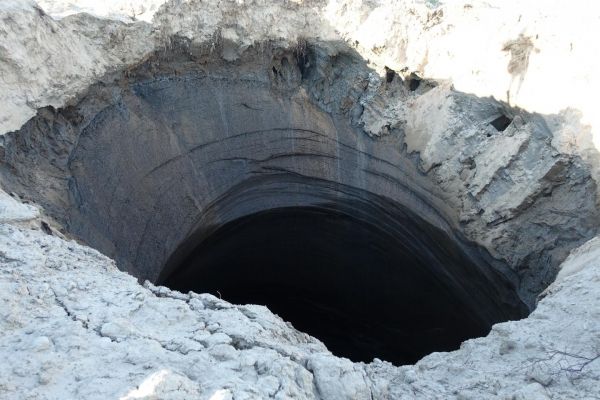Researchers from Skoltech and their colleagues spent more than two years studying a 20-meter wide and 20-meter deep crater in the Yamal Peninsula in northern Russia that formed after an explosive release of gas, mostly methane, from the permafrost. They were able to deduce potential formation models for the discovered crater that has implications for geocryology and climate change studies. Two papers outlining the results of this project, supported by Total, were published (1, 2) in the journal Geosciences.
Permafrost, which amounts to two thirds of the Russian territory, is a huge natural reservoir of methane, a potent greenhouse gas. As the Arctic warms and permafrost degrades due to climate change, scientists are concerned that this methane may start leaking into the atmosphere in massive amounts, further exacerbating global warming.
Right now methane is already quietly seeping from underground in the Arctic, but sometimes it does more than just that: a giant 40-meter wide alien-looking crater, dubbed the “Yamal Crater”, captured everyone’s imagination in 2014 when it was found just 42 kilometers from the Bovanenkovo gas field. Explosive events like this produce impressive “scars”, but scientists are still not sure where the gas that causes them comes from.
Read more at Skolkovo Institute of Science and Technology (SKOLTECH)
Image: Researchers from Skoltech and their colleagues spent more than two years studying a 20-meter wide and 20-meter deep crater in the Yamal Peninsula in northern Russia that formed after an explosive release of gas, mostly methane, from the permafrost. They were able to deduce potential formation models for the discovered crater that has implications for geocryology and climate change studies. (Credit: Anton Sinitsky / Arctic Research Center of the Yamal-Nenets Autonomous District)


